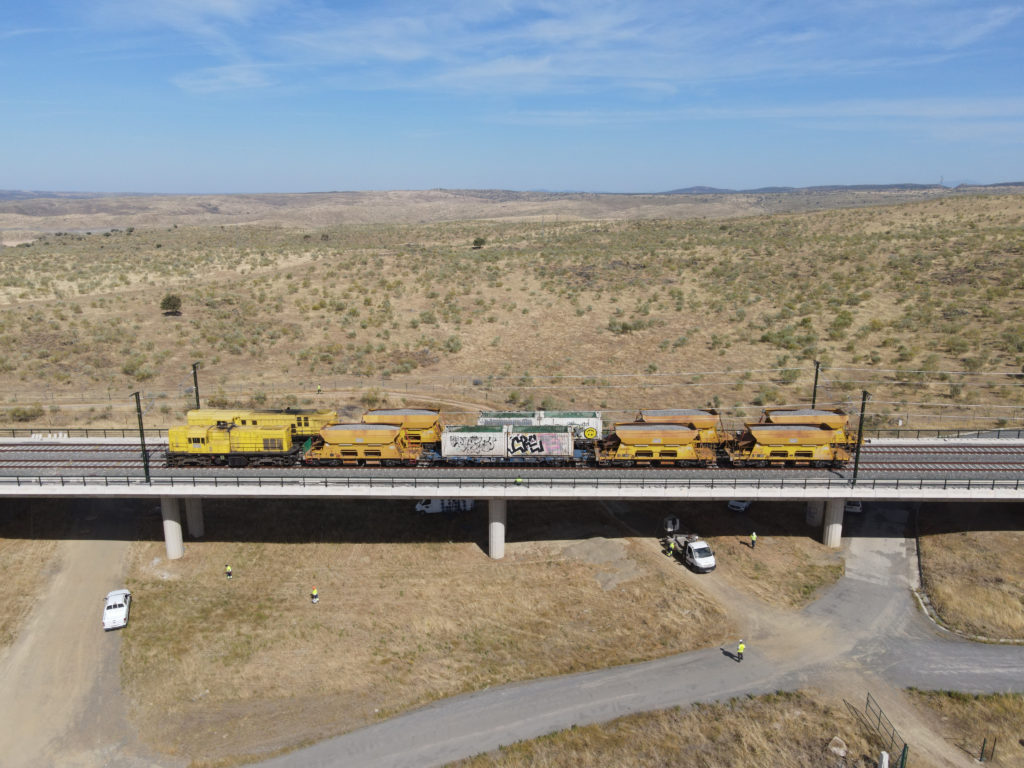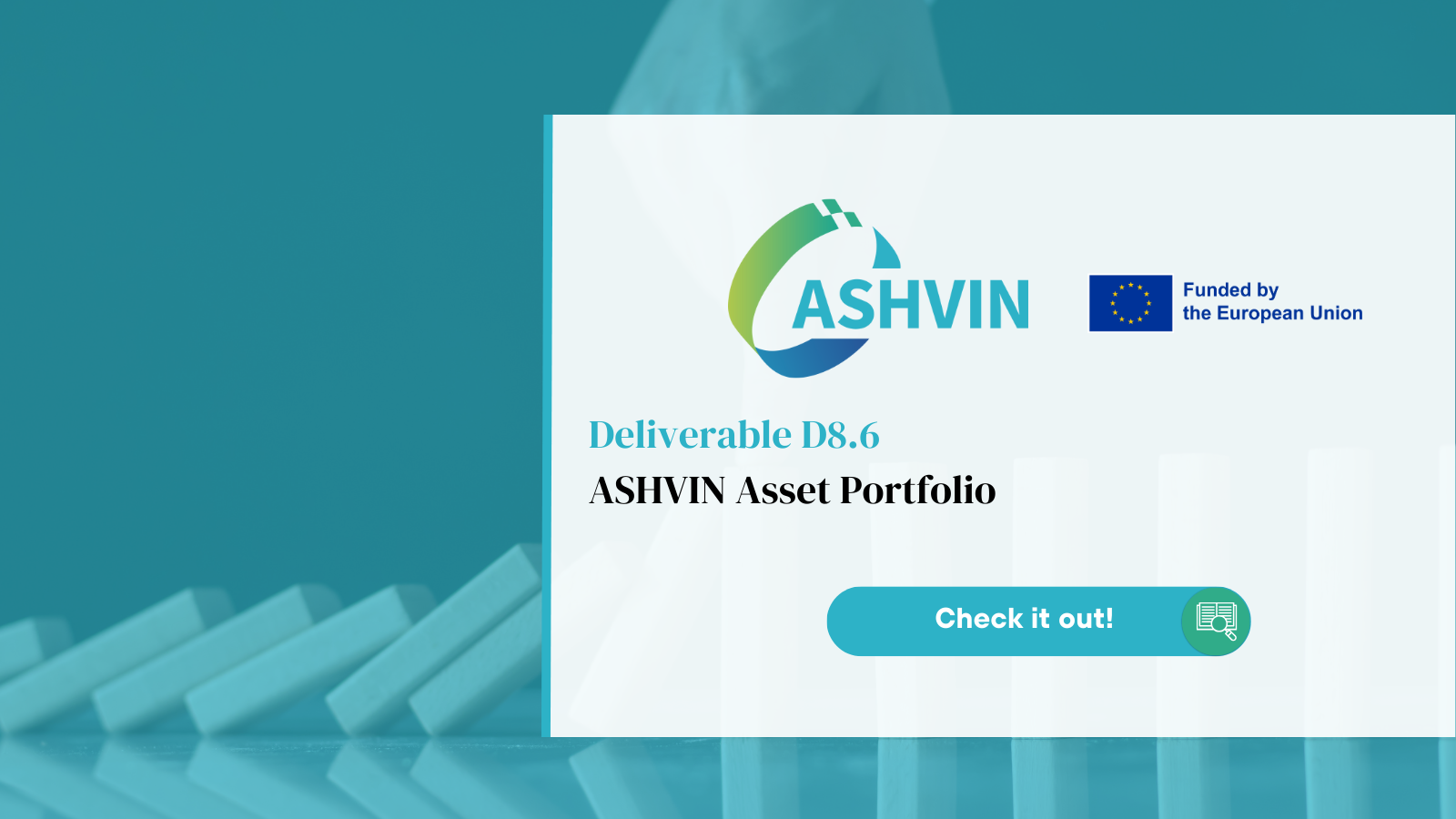ASHVIN project is developing a digital solution will combine an open-source digital twin platform and integrated applications helping to reinforce productivity and safety of construction sites and maintenance operations. The implementation of the system is demonstrated on ten real case studies including bridges, buildings and industrial projects around Europe. The demonstration site #1 “Bridges for high-speed railways in Spain”, that was undertaken since October 2020, is successfully finalized.

What is the demo site # 1?
Alta Velocidad Española (AVE) is a service of high-speed rail in Spain operated by Renfe, the Spanish national railway company, at speeds of up to 310 km/h. Private companies may be able to operate trains in the future using other brands, in accordance with European Union legislation.
The branch of the Highspeed Railway “Madrid-Bajadoz” has been under construction in recent years. It is supposed to connect in the years to come two major European cities in nearly 3 hours by train: Lisbon and Madrid. And one part of this branch “Plasencia-Bajadoz” has opened recently. The railways as well as major infrastructure systems have been tested and monitored.
During the ASHVIN piloting, the Spanish design and engineering firm DRACE (former Geocisa), a collaborator in ASHVIN, performed systematic load tests on the bridges belonging to this railway branch. The company had access to load tests of more than 35 bridges of different sizes. This collaboration with DRACE included design of several load tests among those performed. The network manager (ADIF) agreed to provide the ASHVIN project access to 5 bridges.

These routine load tests are meant to verify standards on the design and construction of the bridges. The load tests consist of the development of a structural model representing a realistic load that is put on the bridge. Measurements related to the response of the structure when subjected to those loads are taken and compared. If results are within tolerances, the bridge is considered as acceptable for operational stage.
The load tests represent an ideal milestone for twinning bridges. On the one hand, specific, bespoke structural models are performed. On the other hand, measurements quantifying the structural response are taken. If both results are matched using not only basic comparisons but comprehensive digital twinning, the asset enters the service phase not only physically, but also virtually.
The demonstrator #1 is aimed at establishing requirements, procedures and for the generation of the most realistic virtual replica of the physical bridges that can be used during operation. The focus is on the maintenance phase of the construction process. ASHVIN Partner UPC (↗️), in charge of the development of the structural model matching, led this pilot.

What is the desired impact?
The challenge is to develop a realistic Digital-twin for maintenance purposes upon which managers can rely during operation. Establishing a known baseline for new assets represents an ideal scenario for future needs. This can have a great impact on cost reduction and safety at operational stages.
How ASHVIN run on the demo site?
ASHVIN technologies support the development of load tests on four different bridges of different sizes; simply supported beams, continuous beams, culverts, and prestressed concrete arches were among the selected bridges. The complexity varied in type from simple underpasses to complex arch bridges and BIM models were not available for these. The deployed sensors feeding varied data to the ASHVIN platform were partly provided by DRACE and partly provided by ASHVIN partners.
Three applications (GISI, MatchFEM and RISA) of the ASHVIN Digital toolkit (↗️), connected to the ASHVIN platform (↗️) and sensing devices, were implemented at this site.

What is the status?
All measurements are finished, and the development of the twin is on-going. MatchFEM capabilities are tested using this site. Different numerical models are developed, and other commercially available models are also used. The model is implemented within the ASHVIN platform where it represents a valuable case study for defining fields and data information pipelines.
Also, all data from sensors is uploaded in the ASHVIN IoT platform from where all data requests are enabled, and now information pipelines are in advanced stages. Automated pipelines of information between geometry, models, sensors and decision-making tools are at advanced stages.
What challenges have been faced?
On one side, the access to the site was enabled by DRACE who is the contractor of load testing bridges belonging to the Plasencia-Cáceres railway network. On the other side, the owner of the network is the public company ADIF. One challenge consisted of the need to be timely assisting to the development of load tests. The schedule was determined by complex logistics involving both stakeholders.
What are the next steps?
Now that the data collection and measurements are successfully conducted at the pilot site, the research phase continues. The final action is to establish a validated procedure for defining the digital twin of a bridge in which measurements are adequately compared with numerical models and verified pipelines of information are established from the beginning of the Maintenance phase.
In addition, aiming at exploring ways to Standardize procedures, ASHVIN has established links with International Technical Committees such as IABMAS-Load Tests. Roadmaps and pathways for the potential Standardization of the Digital Twinning of Load Tests represent a clear impactful goal for the project.
For more information please visit our Digital Toolkit Page, downloadour official deliverableand connect with us through our LinkedIn or Twittercommunities!





